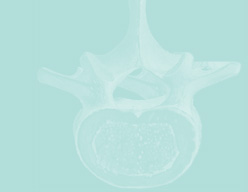page [1] [2] [3] [4] [5] [6] [7] [8]


Low back pain is the most common and costly musculoskeletal problem affecting the working population. The incidence of back pain due to spinal diseases varies with age and is mostly spread out through the individual's life. The traditional epidemiological concept of incidence is also difficult to apply to the experience of back pain due to its unstable, episodic nature and uncertainty of onset. Epidemiological data for spinal disorders of many specific and all nonspecific causes is unfortunately often reported as back pain, regardless of diagnosis or cause. Epidemiological data on spinal disorders have been collected primarily in North America and Europe. Up to 35% of sedentary and 47% of physical laborers may acquire occupationally related back pain. Ninety percent of acute back pain injuries resolve within 6 weeks to 3 months of injury. While this spontaneous recovery in a single episode suggests that nonspecific spinal disorders are self-limiting disease processes, recent studies provide evidence for a fluctuating, recurrent and intermittent course of nonspecific musculoskeletal back pain among adults that may lead to a chronic state. Five to ten percent of patients have chronic or recurrent back pain which may persist for years.
The incidence of back pain due to nonspecific spinal disorders varies between 4 and 5% annually in most industrialized countries, and the life-time prevalence varies between 60 and 85%. The incidence and prevalence of back pain in developing countries is unclear due to the unavailability of appropriate data.
The natural history of specific spinal diseases which result in back pain is relatively uniform. Slow progression of the radiographic evidence of spinal damage, accompanied by a gradual increase in the amount of pain and physical disability experienced, are the generally accepted features of progressive spinal disease. The natural history of nonspecific musculoskeletal spinal disorders which result in back pain is sporadic. At present, neither different stages of nonspecific back pain nor distinct overall course patterns have been described satisfactorily.
| page [1] [2] [3] [4] [5] [6] [7] [8] >> next |